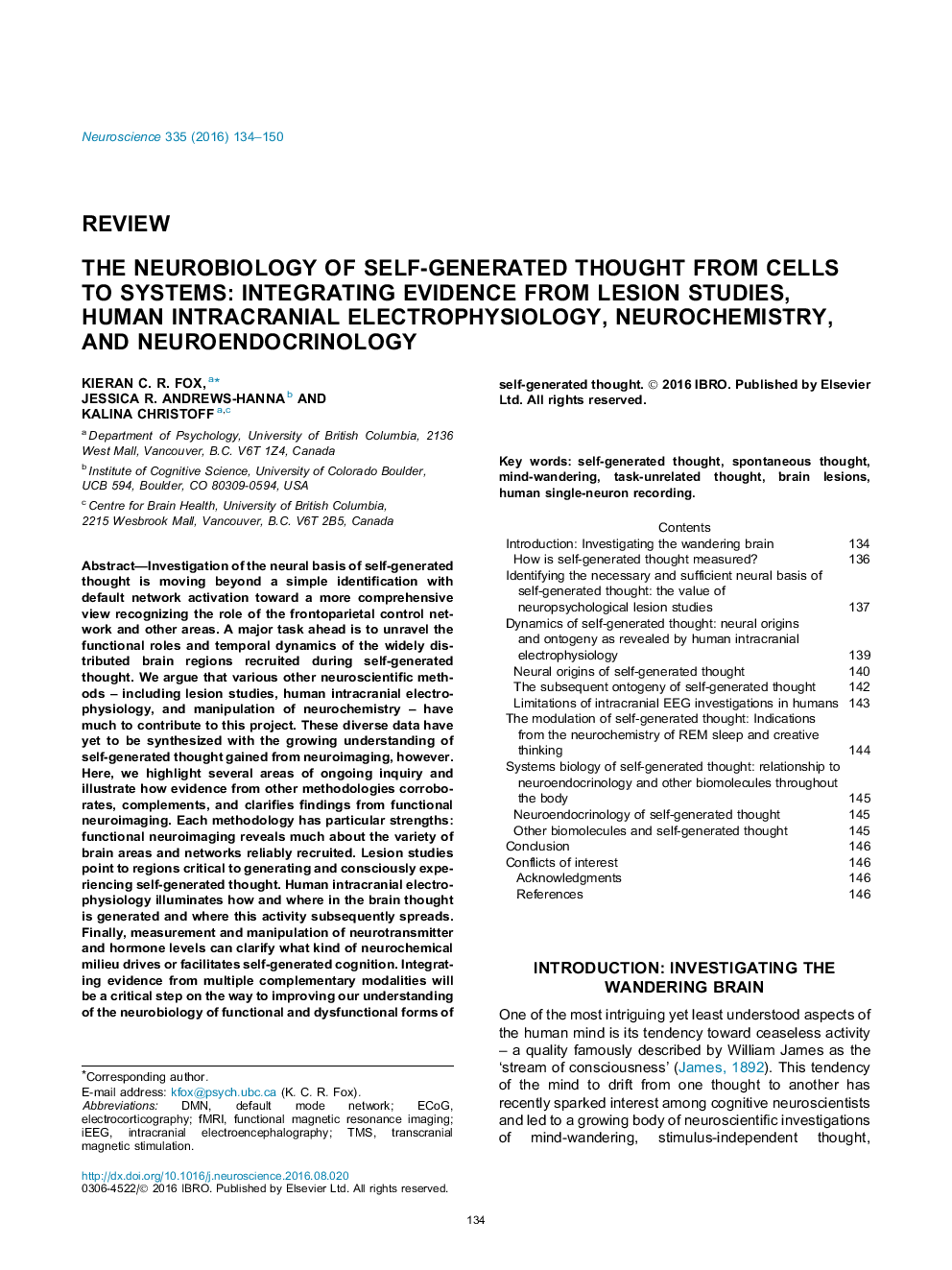| Article ID | Journal | Published Year | Pages | File Type |
|---|---|---|---|---|
| 4337261 | Neuroscience | 2016 | 17 Pages |
•Human self-generated thought can best be understood by combining multiple methods.•We review key evidence from lesion studies, intracranial EEG, and neuro chemistry.•Intracranial EEG suggests a key role for medial temporal lobe in thought generation.•Medial prefrontal cortex and inferior parietal lobule also appear to be critical.•Self-generated thought is linked to hormones and biomolecules throughout the body.
Investigation of the neural basis of self-generated thought is moving beyond a simple identification with default network activation toward a more comprehensive view recognizing the role of the frontoparietal control network and other areas. A major task ahead is to unravel the functional roles and temporal dynamics of the widely distributed brain regions recruited during self-generated thought. We argue that various other neuroscientific methods – including lesion studies, human intracranial electrophysiology, and manipulation of neurochemistry – have much to contribute to this project. These diverse data have yet to be synthesized with the growing understanding of self-generated thought gained from neuroimaging, however. Here, we highlight several areas of ongoing inquiry and illustrate how evidence from other methodologies corroborates, complements, and clarifies findings from functional neuroimaging. Each methodology has particular strengths: functional neuroimaging reveals much about the variety of brain areas and networks reliably recruited. Lesion studies point to regions critical to generating and consciously experiencing self-generated thought. Human intracranial electrophysiology illuminates how and where in the brain thought is generated and where this activity subsequently spreads. Finally, measurement and manipulation of neurotransmitter and hormone levels can clarify what kind of neurochemical milieu drives or facilitates self-generated cognition. Integrating evidence from multiple complementary modalities will be a critical step on the way to improving our understanding of the neurobiology of functional and dysfunctional forms of self-generated thought.
